Bio 11 Exam

Bio 11 Exam Quiz
Test your knowledge of biology with our comprehensive Bio 11 Exam Quiz! This quiz covers a variety of topics including digestion, respiration, genetics, and cellular processes. Perfect for students looking to review their understanding or prepare for exams.
The quiz includes:
- 97 individual questions
- Multiple choice format
- Diverse topics from human biology
The last part of the small intestine:
Duodenum
Ileum
The sphincter that regulates movement from esophagus to stomach
Pyloric sphincter
Cardiac sphincter
Ingested food in the small intestine known as:
Chyme
Bolus
This is not a function of the large intestine
Produce vitamins
Produce bile
Rhythmic contraction of smooth muscles in the GI tract
Peristalsis
Heartburn
This type of digestion occurs in the mouth
Chemical and physical
Chemical
Physical
This enzyme is responsible for digesting protein
Amylase
Pepsin
This is not a function of the digestive system
Secretion
Egestion
The anatomical name for windpipe
Trachea
Pharynx
During external respiration
Alveoli to blood
Atmosphere to alveoli
A normal breath is called
Tidal
Expiration
This occurs during inhalation
Intercostal muscles relax
Chest cavity expands
This person recorded highest lung capacity
Ellie
Ethan
Muscular flap that covers trachea
Epiglottis
Larynx
This type of circulation in the left side of the heart
Pulmonary
Systemic
The two main components of blood
Blood cells, plasma
Water, nutrients
Veins that transport blood into the right atrium
Vena cava
Aorta
This artery carries deoxygenated blood
Carotid
Pulmonary
Metal found in hemoglobin
Iron
Iodine
Tissue that covers heart
Pericardium
Myocardium
By convention, Aa is described as
Dominant
Hybrid
Human cell with 23 chromosomes
Gamete
Zygote
The F1 offspring of BB x bb would have this percentage of dominant trait
100
50
A designation of XY would represent
Male sperm
Normal male
If A and B represent 2 genes, then this would result in a phenotype ratio of 9:3:3:1
AABb x Aabb
AaBb x AaBb
If 20% of the cells genome are cytosine, then this amount of adenine would be found
20%
30%
Adenine is a nitrogen base found in DNA, it bonds with
Thymine
Uracil
Sister chromatids held together by this protein
Centromere
Centriole
This event of meiosis happens in the chiasmata
Kinetocore
Crossing over
The name of the acid found in DNA
Phosphoric
Nitric
Where is deoxyribonucleic acid found in the cell
Mitochondria
Chloroplast
Nucleus
All of these
This type of cell division can be referred to as the reduction division
Meiosis
Mitosis
A tetrad would be observed in this stage of meiosis
Prophase II
Prophase I
A test cross in genetics uses an individual with a genotype of:
Homozygous dominant
Homozygous recessive
This is a sex-linked, X chromosome trait in humans:
Hemophilia
Blood type
Diabetes
Hair colour
Uracil replaces this nitrogen base in RNA:
Guanine
Thymine
Chromatin is found in this stage of the cell cycle:
Interphase
Prophase I
A person with the genotype BO for blood type has the phenotype of:
A
B
B and O
Colour blindness is an X linked recessive genetic disorder. The chances of having a colour blind son whose mother is colour blind is:
100%
0%
50%
What is the chance of being homozygous recessive in the F2 generation if the P1 is AA x aa?
0%
25%
50%
Prokaryotes are found in this Kingdom of life:
Archea
Protista
Fungi
A micrometer is the measurement used in microscopy. A micrometer is the same
1 x 10-6 m
100 pm
This microscope part controls the amount of light reaching the stage:
Ocular
Diaphragm
Objective
This is the sister company of Google and is involved in science research:
Deep Mind
Space X
Tesla
The products of cellular respiration are:
O2, CO2
CO2, H2O
Water, sugar
The scientific name of this organism is communicated correctly:
T. acidophilium (indented)
T. Acidophilium
T. acidophilium (all underlined)
This piece of microbiology equipment came into the lab sterile:
Inoculating loop
Petri dish
Ribosomes are cell structures that are made by the:
Nucleolus
Nucleus
Golgi body
A prokaryotic microorganism distinct from eubacteria that processes a cell wall not containing peptidoglycan is:
Eubacteria
Archaea
Virus
Aseptic technique practices include:
Wiping lab bench with bleach solution
washing your hands after micro labs
Keeping contaminated disks at bench
All of these
The bacteria growing in the Petri dishes move because of:
Flagella
Cilia
Flagella and cilia
Appendices
This organelle comes from the membrane pinching off from the Golgi body:
Lysosome
Liposome
Single cell members of this Kingdom of life were visible to you in the pond water
Archaea
Protista
In classification, this taxon is more general than Kingdom:
Order
Domain
Class
This scientist was the first to use taxonomy as a classification approach to life:
Darwin
Linneaus
A student provides a total magnification of 150X in their diagram. If they are using a 10X objective, then the ocular magnification must be:
150x
15x
10x
Cellular energy for all cells is this molecule:
ATP
STP
Sugar
Streak plating is performed by using this specialized piece of microbiology equipment:
Inoculating loop
Splint
Scoopula
Small circular DNA found in some bacteria.
Vesicle
Plasmid
Liposome
Cells from this Kingdom have cell walls:
Plant
Archaea Bacteria
Fungi
All of these
Viruses are measured in nanometers. A nanometer is:
0.000,000,001 mm
1 x 10-9 m
This is the most abundant macromolecule on the planet:
Glucose
Cellulose
Amylase
Which category of macromolecule is not found as a component of a cell membrane?
Protein
Nucleic acid
Lipid
Lipids are described as being:
Large hydrophobic molecules
Only ring structured
Small hydrophilic atoms
Carbon has an atomic number of 6 and an atomic mass of 12. This statement about an atom of carbon is correct:
It has a bonding capacity of 4
It has 6 valence electrons
It has three electrons shells
This membrane structure is involved in cell recognition:
Glycoprotein
Lon channel
Phospholipid
The coefficients needed to balance C6H12O6+ O2 CO2 + H2O + 38 ATP
1, 6, 1, 6
1, 6, 6, 6
6, 36, 6, 18
Bacteria reproduce asexually by the process of:
Duplication
Binary fission
Mitosis
This Kingdom of life have species that are plant-like, animal-like and fungi-like:
Archaea
Protists
Eubacteria
Archaea have this unique molecule in their cell membranes:
Glucosamine
Phytanyl
Chitin
Members of this eukaryotic Kingdom have cell walls and are a huge part of an ecosystem's nutrient cycle:
Fungi
Plant
Bacteria
Members of this Kingdom are autotropic and provide humans with nutrition, fiber, and pharmaceuticals:
Plant
Protist
Bacteria
Scarlet fever, strep throat and pneumonia are caused by species in this Kingdom of life:
Fungi
Eubacteria
Archaea
Colour pigments can be added to chitin for:
Concealment
Recognition
protection
All of these
An antibiotic prevents the cross-bridging between peptide chains of the cell walls found in:
Plants
Eubacteria
Viruses
The movement of a substance from an area of high concentration to an area of low concentration is:
Bulk transport
Diffusion
Osmosis
Sexual reproduction in a bacteria occurs through this process:
Conjugation
Mitosis
Copulation
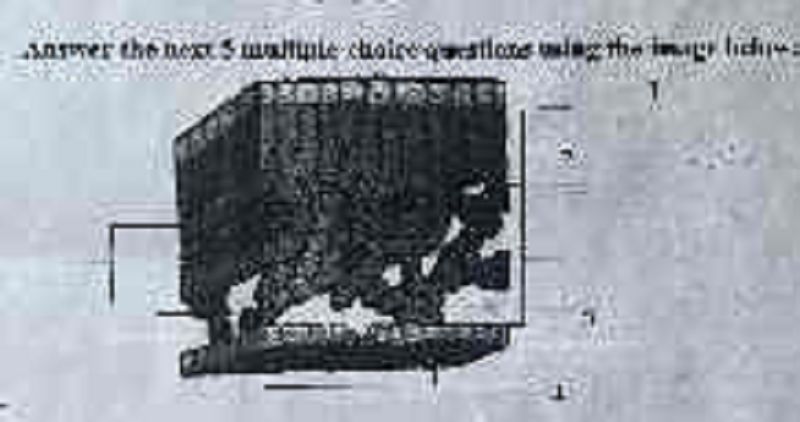
This is a diagram of a:
Angiosperm leaf
Monocot root
Dicot stem
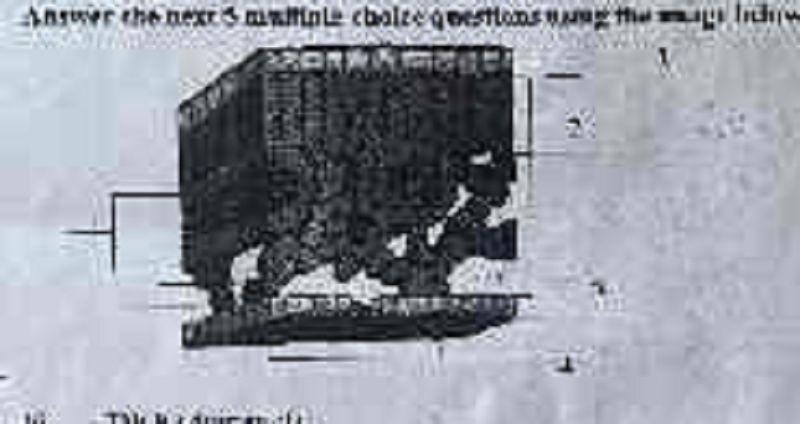
Label #1 identifies
Epidermis
Cuticle
Cell membrane
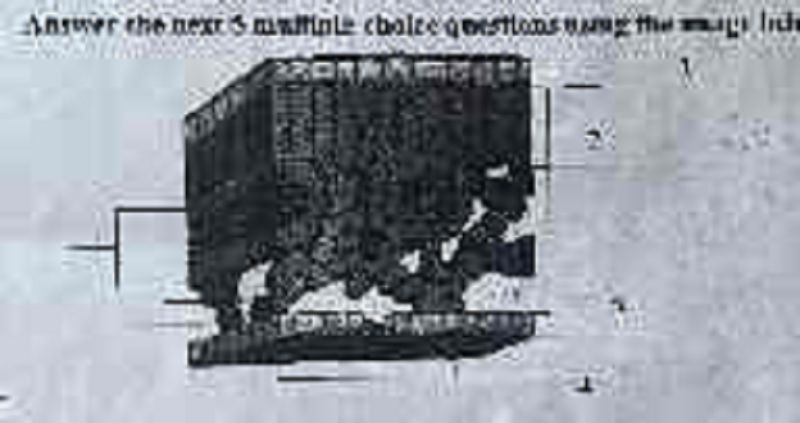
Label #2 identifies
Mesophyll
Palisade
Spongy
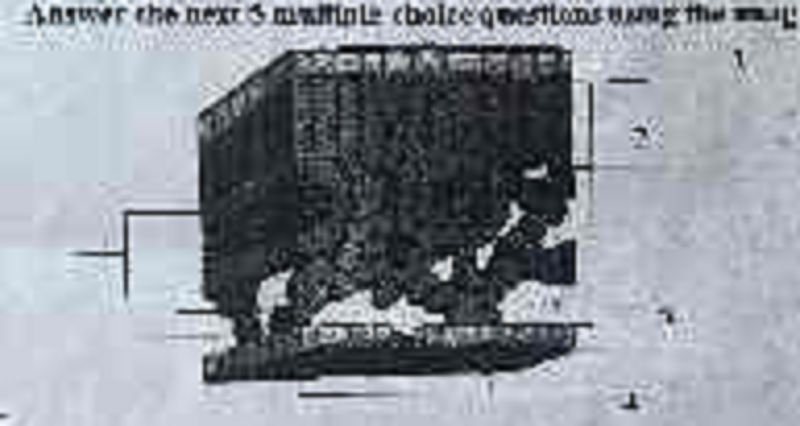
Label #3 identifies:
Parenchyma
Lower epidermis
Endosperm
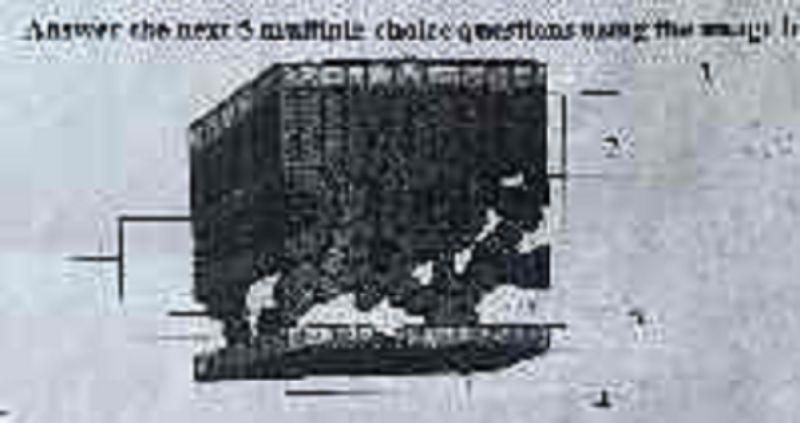
Label #4 identifies:
Guard cells
Epidermis
Stoma
Stomata open during the day in response to:
Gravity
Circadian rhythm
High nitrogen levels
The green pigment necessary for photosynthesis is
Chlorophyll
Mesophyll
Parenchyma
In the reaction of photosynthesis six molecules of CO2 react with six molecules of
Hydrogen dioxide
H20
Oxygen
Glucose
Tracheid cells and vessels die and become this tissue
Phloem
Xylem
Pith
Angiosperms are classified by the seed leaf which is called a
Cotyledon
Carpel
Bundle
The plants with naked seeds is classified as a(n):
Angiosperm
Gymnosperm
Spermatophyte
Active transport of large molecules across the plasma membrane into a cell is known as:
Osmosis
Endocytosis
Diffusion
This is NOT a characteristic of a dicot plant:
Two cotyledons
Veins parallel
Vascular bundles in stem are arranged in a ring
Which statement about cuticle is incorrect:
It is a complex carbohydrate produced by epidermis cells
It restricts gaseous exchange from the environment through to the plant tissues
It protects plant tissues from infection by microorganisms
This statement about guard cells is correct:
Five guard cells make up the stoma
They are a typically found in the lower epidermis of a terrestrial plant leaf
They are found in the mesophyll layer of the stem
A plant cell become turgid when this substance applies pressure to the cell wall:
Salt
Water
Sugar
Translocation is the movement of substances in the:
Phloem
Xylem
Periderm
This statement about roots is true:
They absorb water and minerals from soil
They are classified as taproot or fibrous root
They support and anchor the plant
All of the above are true
Plasmolysis (wilting) of a plant cell will happen if it is in this type of environment:
Hypertonic
Hypotonic
Isotonic
The Calvin Cycle of photosynthesis occurs in this part of the chloroplast:
Stoma
Stroma
Thylakoid
{"name":"Bio 11 Exam", "url":"https://www.quiz-maker.com/QPREVIEW","txt":"Test your knowledge of biology with our comprehensive Bio 11 Exam Quiz! This quiz covers a variety of topics including digestion, respiration, genetics, and cellular processes. Perfect for students looking to review their understanding or prepare for exams.The quiz includes:97 individual questionsMultiple choice formatDiverse topics from human biology","img":"https:/images/course8.png"}
More Quizzes
Bio Lecture: Test 1
402023
Biochemistry Module 1 practice
10511
Which Glee Charcter Are You?
1050
Quanto sai davvero del Mondo di Harry Potter?
9478
Is My Boyfriend Treating Me Right? Free Relationship
201016790
Spontaneous Recovery Psychology - Free Online
201016849
Insomnia Test: How Well Do You Know the Signs? - Free
201020712
Which of the Following Is Not a Concurrent Power?
201019918
Can I Win a Street Fight? Free
201018786
Seinfeld - Prove You're a True Fan
201017676
ResCare Training Safety - Are You Safety‑Ready?
201017345
Discover Your Cutie Mark: Free Cutie Mark!
201016559